In fig.25-45 V=12V C1=10μFandC2=C3=20μF Switch S in first thrown to the left side until capacitor 1 reaches equilibrium. Then the switch is thrown to the right when equilibrium is again reached, how must charge is on capacitor 1?
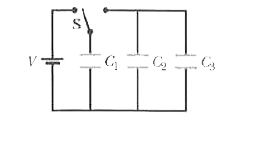
24μC
Topper's Solved these Questions
- CAPACITANCEBOOK - RESNICK AND HALLIDAYCHAPTER - CAPACITANCEEXERCISE - PRACTICE QUESTIONS (SINGLE CORRECT CHOICE TYPE)
23 Videos
- CAPACITANCEBOOK - RESNICK AND HALLIDAYCHAPTER - CAPACITANCEEXERCISE - PRACTICE QUESTIONS (MORE THAN ONE CORRECT CHOICE TYPE)
12 Videos
- CAPACITANCEBOOK - RESNICK AND HALLIDAYCHAPTER - CAPACITANCEEXERCISE - CHECKPOINTS
4 Videos
- ALL ABOUT ATOMS BOOK - RESNICK AND HALLIDAYCHAPTER - ALL ABOUT ATOMS EXERCISE - CHECKPOINT
1 Videos
- CENTER OF MASS BOOK - RESNICK AND HALLIDAYCHAPTER - CENTER OF MASS EXERCISE - Practice Questions (Integer )
4 Videos
Similar Questions
Figure 25-27 displays a 16.0 V battery and 3 uncharged capacitors of capacitances C1=4.00μF,C2=6.00μFandC3=3.00μF The switch is thrown to the left side until capacitor 1 is fully charged. Then the switch is thrown to the right. What is the final charge on (a) capacitor 1, (b) capacitor 2 and (c ) capacitor 3?
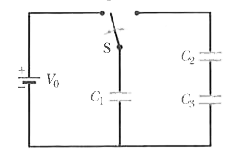
View SolutionFigure 25-43 shows a 24.0 V battery and four uncharged capacitors of capacitances C1=1.00μF,C2=2.00μFC3=3.00μFandC4=4.00μF IF only switch S1 is closed, what is the charge, on (a) capacitor 1 (b) capacitor 2 (c ) capacitor 3 and (d) capacitor 4? IF both switches are enclosed , what is the charge on (e) capacitors1.(f) capacitor 2, (g) capacitor 3, and (h) capacitor 4?

View Solution
Knowledge Check
In the given circuit the charge on the plates of 1 μF capacitor, when 100 V battery is connected to the terminals A and B will be
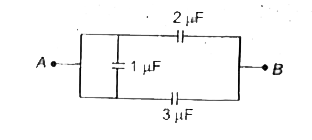 A100 μCB50 μCC10 μCDzero
A100 μCB50 μCC10 μCDzero
When switch S is thrown to the left in figure, the plates of capacitor 1 acquire a potential difference V0. Capacitors 2 and 3 are initially uncharged. The switch is now thrown to the right. What are the final charges q1,q2 and q3 on the capacitors?
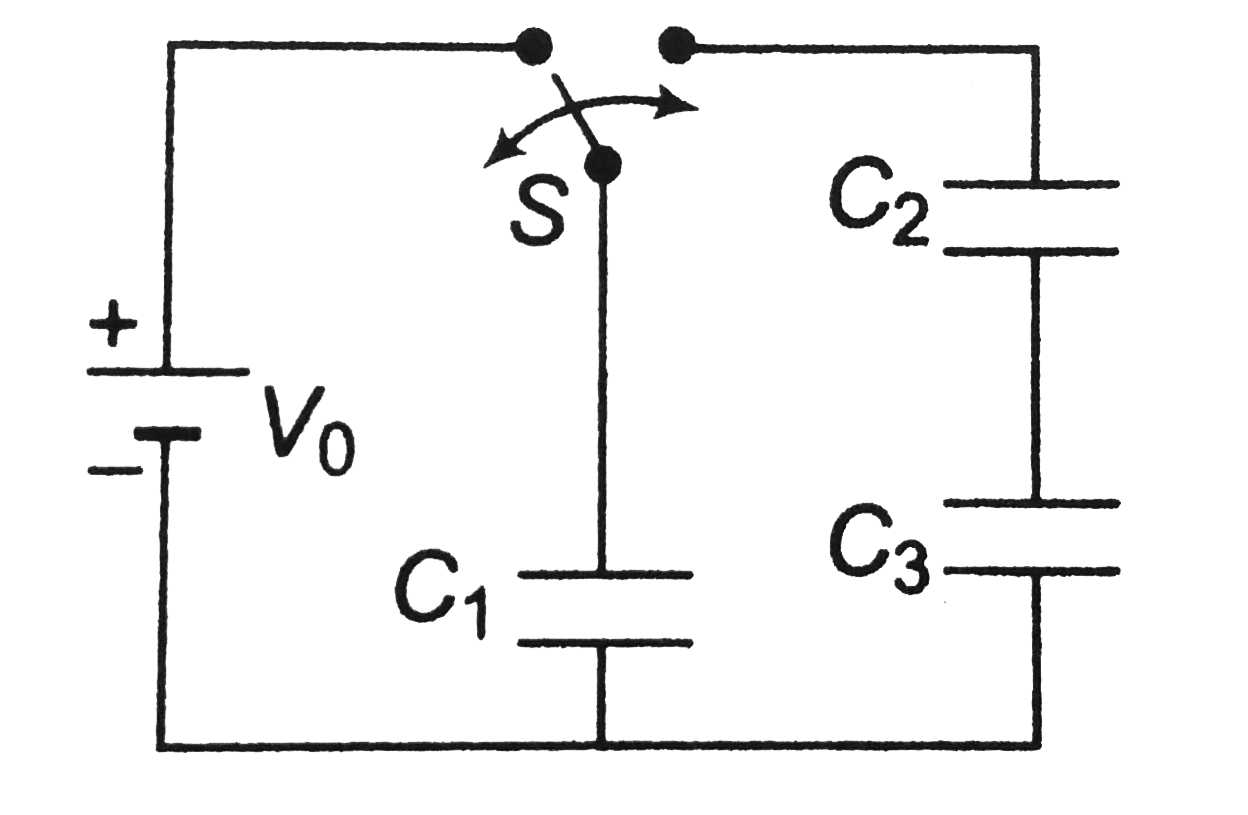
View SolutionIn Fig. 25-25 C1=10.0μF,C2=5.0μFandC3=4.0μF What is the change in their equivalent capacitance if (a) capacitors 1 and 2 are interchanged and (separately) (B) capacitors 1 and 3 are interchanged?
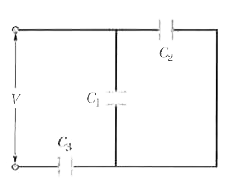
View SolutionAn infinite ladder network consisting of all equal resistances, r=102.732Ω is placed side by side to a capacitor system as shown in fig. Initially, all the switches are kept open and all the three capacitors are given equal charges of 30μCeach. The capacitances are C1=3μF,C2=6μFandC3=6μF. Polarity of charges on the capacitor plates is shown in the fig. Now all the three switches are closed simultaneously.
(a) find the magnitude of rate of change of charge on the plates of the capacitors immediately after the switches are closed.
(b) Calculate heat generated in the circuit by the time steady sate condition is established.

View SolutionIn the circuit shown, all capacitors are identical. Initially, the switch is open and the capacitor marked C1 is the only one charged to a value Q0. After the switch is closed and the equilibrium is reestablished, the charge on the capacitor marked C1 is Q. Find the ratio initial change to final charge in capacitor C1.
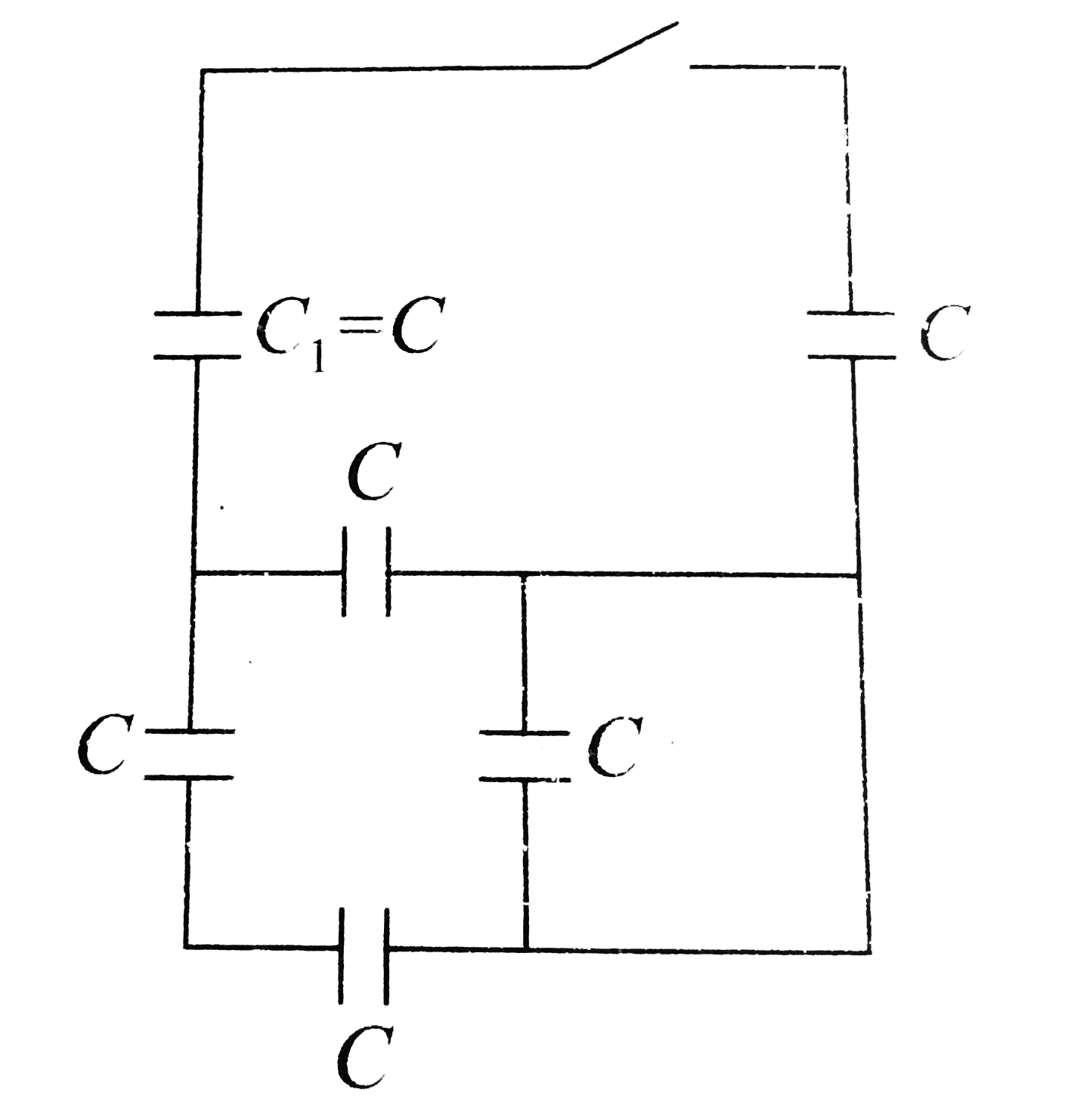
View SolutionInitial charge on capacitor of 3μC. Find initial current when switched is closed.
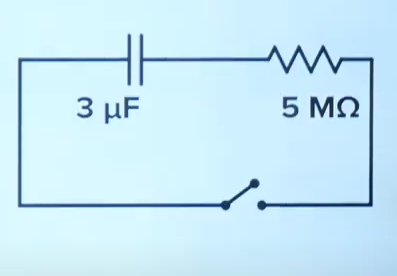
View SolutionIn the circuit shown in figure C1=1μF and C2=2μF. The capacitor C1 is charged to 100V and the capacitor C2 is charged to 20V. After charging then are connected as shown. When the switches S1,S2 and S3 are closed, the charged flowing through S1 is
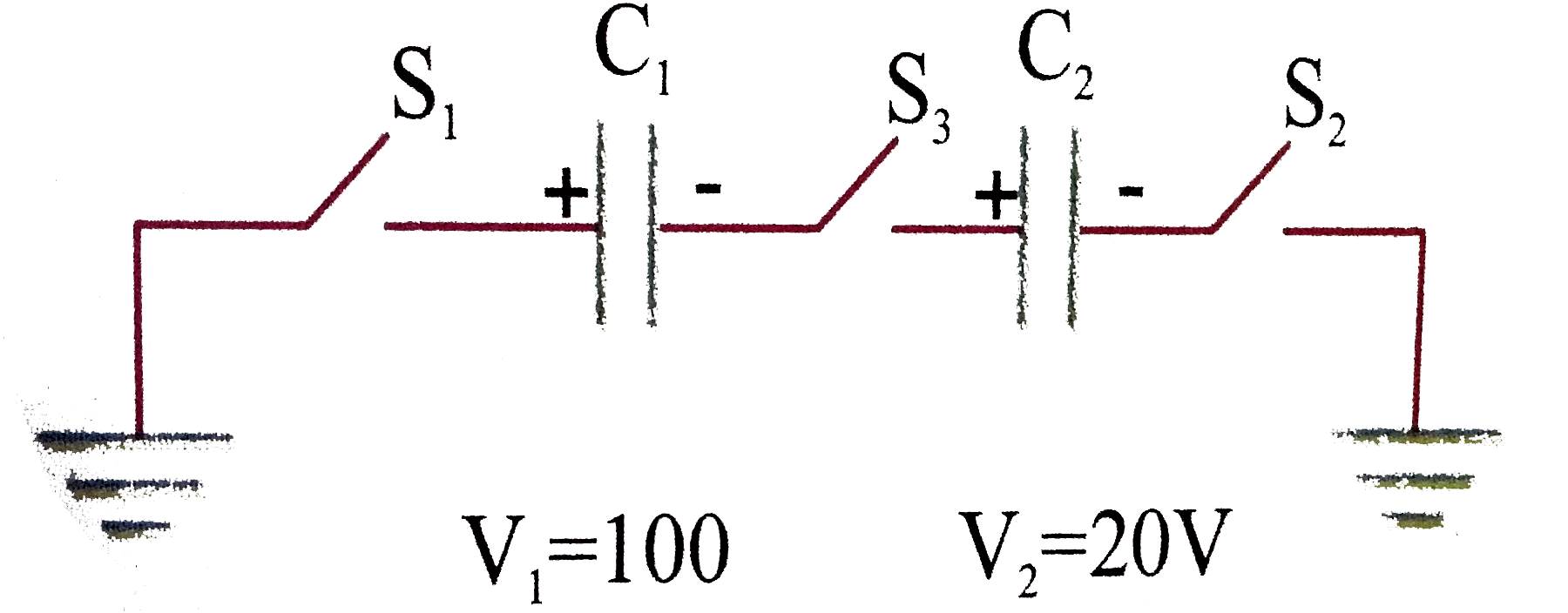 .
.
View SolutionIn the figure shown below ,the charge on the left plate of the 10μF capacitor is −30μC.The charge on the right plate of the 6μ,F capactior is :

View Solution
